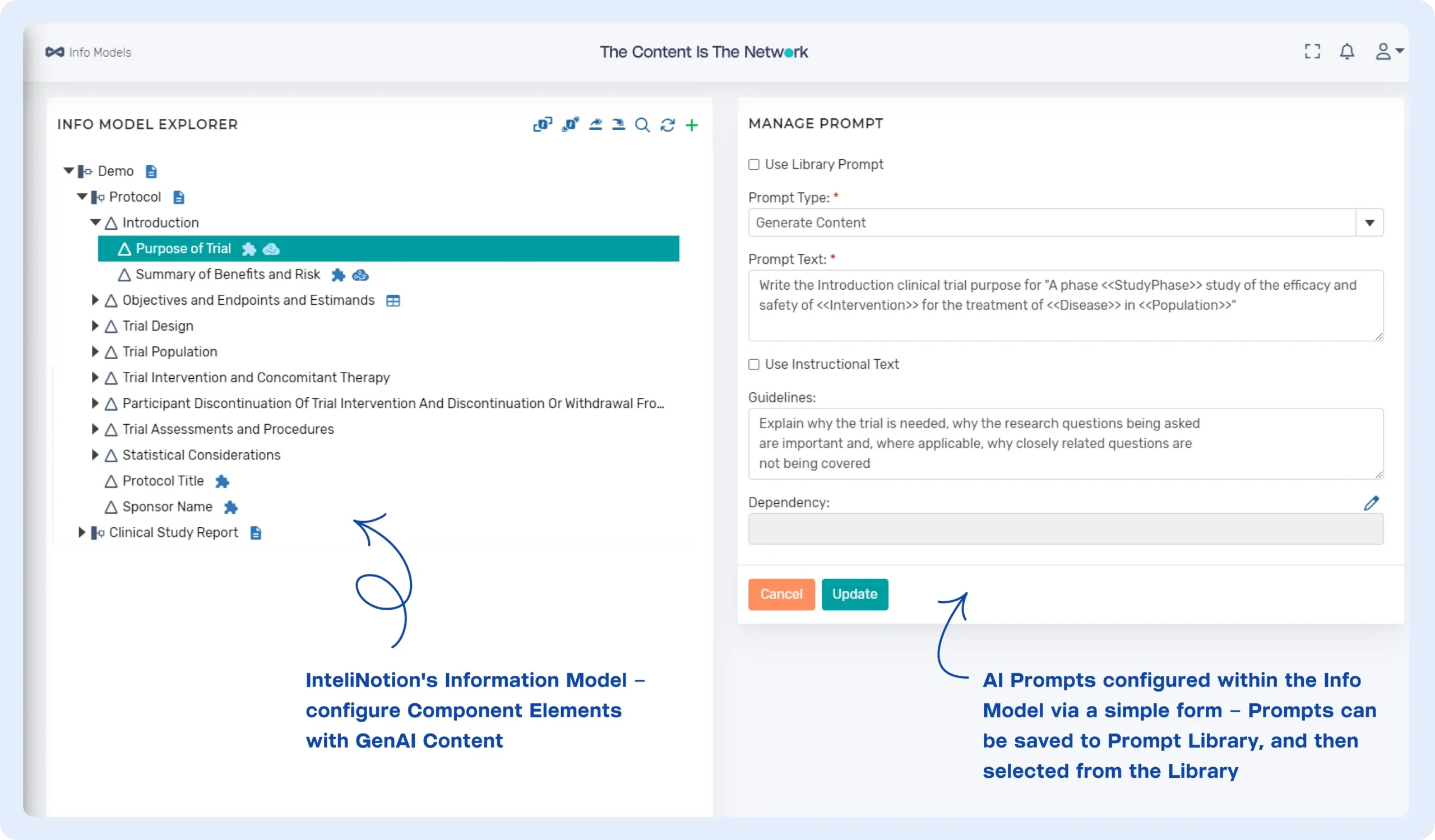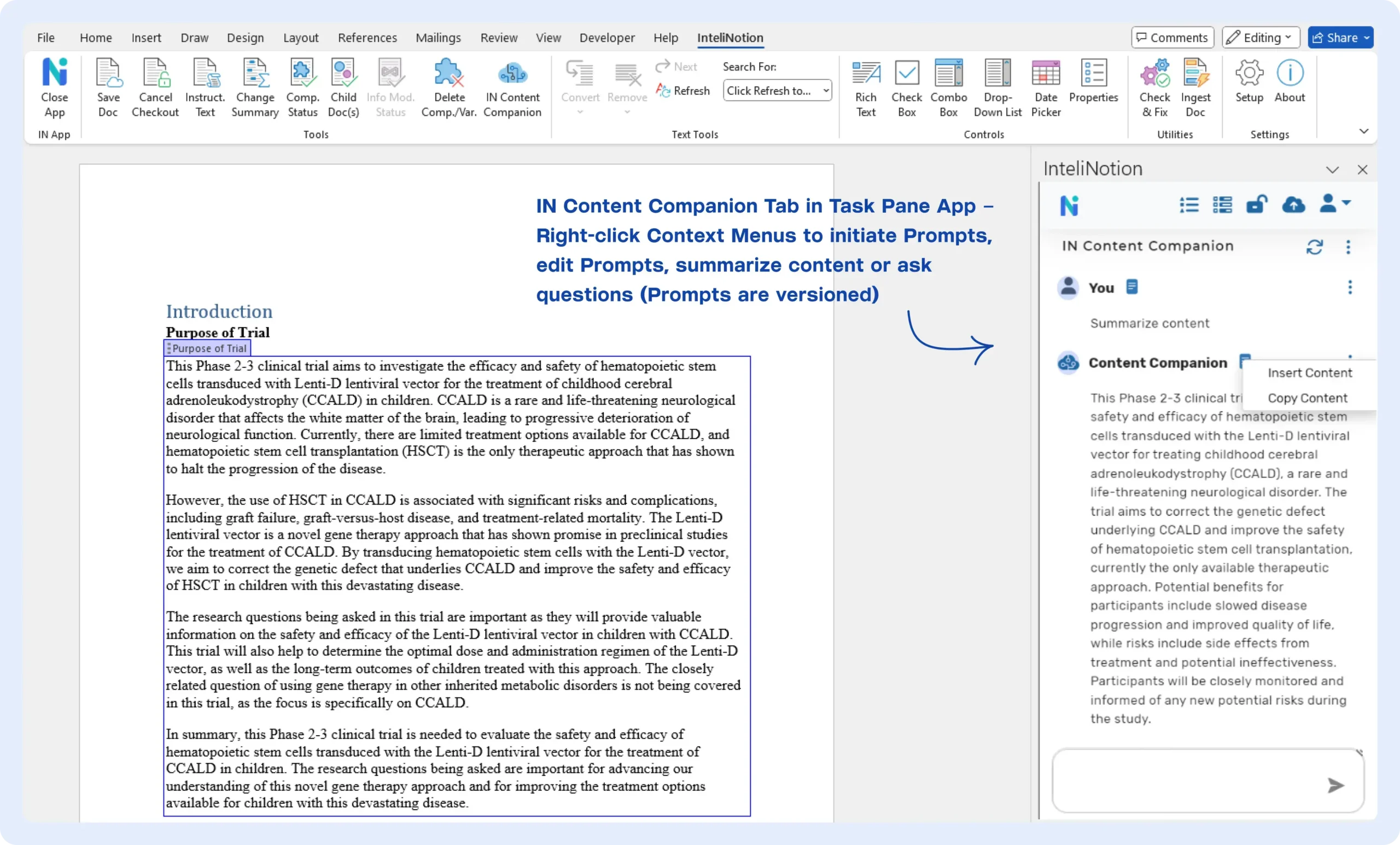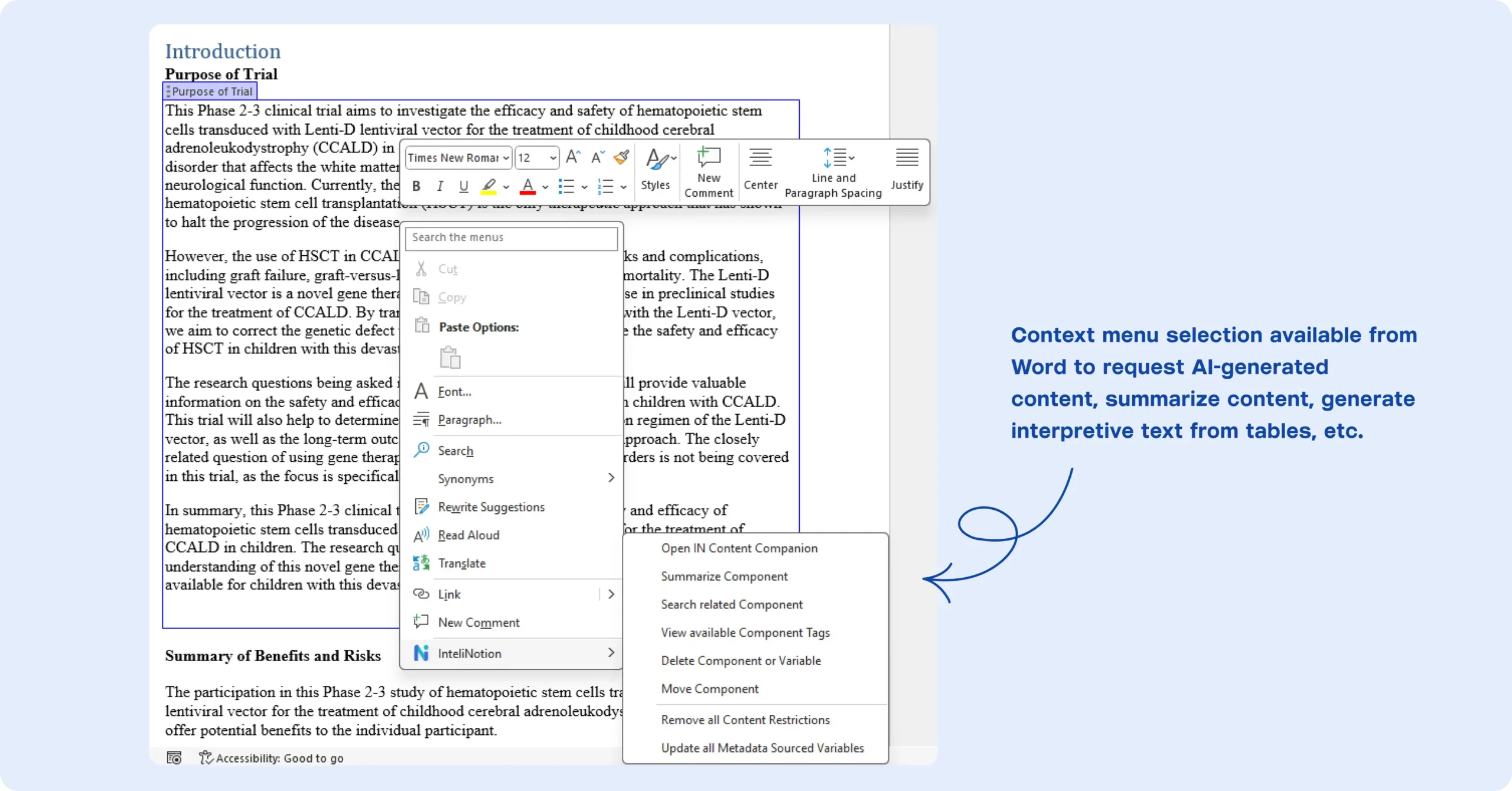AI-DRIVEN Structured Content
Revolutionizing Medical Writing with
AI-Driven Structured Content
The biopharma industry operates in a highly regulated environment with constantly evolving guidelines. To navigate this landscape, leveraging advanced technologies is essential for streamlining content creation and ensuring compliance.
Generative AI (GenAI) is proving to be a transformative tool, revolutionizing content generation, regulatory information management, and submission processes. However, the effectiveness and accuracy of GenAI hinge on the quality and structure of the underlying content and data.

Maximizing GenAI Efficiency through Structured Content
GenAI has the potential to revolutionize regulatory content generation and authoring in the biopharma industry. However, its true value is realized only when it operates on high-quality, structured content. In biopharma, where precision and accuracy are critical, the absence of structured content can result in significant inaccuracies and require additional effort by authors to review and edit AI-generated content, impacting efficiency and regulatory compliance, and potentially jeopardizing patient safety.
Improving GenAI Outputs with Prompt Specificity
In practice, both high data quality and prompt specificity are crucial for unlocking the full potential of GenAI. Specific prompts guide AI models to generate precise, contextually relevant, and actionable insights, ensuring regulatory compliance. By prioritizing data quality and prompt specificity, organizations can drive better outcomes and create significant value.
The Role of Structured Content in Improving Prompt Specificity
Structured content offers a robust framework for configuring component-level prompts, ensuring segmentation, detailed context, precision, consistency, and compliance. By breaking information into distinct components, structured content enables the creation of detailed prompts for each segment.
The InteliNotion Solution: AI-Driven Structured Content
InteliNotion seamlessly integrates embedded GenAI capabilities into our core Content Platform. Our solution provides intuitive prompt configurability and management directly within our structured models and related templates to deliver an innovative GenAI-Assisted Contextual Authoring Experience to authors.
The following diagram illustrates the InteliNotion solution flow for
AI-Driven Structured Content and GenAI-Assisted Contextual Authoring:

Component Prompt Configurations
The InteliNotion solution for GenAI embodies our vision of empowering clients to configure, manage, and govern component-level prompts within our clients’ models.
The following screenshot showcases the initial configurability of component-level prompts within the InteliNotion Info Model:

The Prompt Library, shown in the screenshot below, supports prompt management and governance, and allows prompts to be reused across multiple models and templates:

GenAI-Assisted Contextual Authoring
Once the prompts have been configured into the Info model, when the author generates the document using the template and associated Info model, the platform will generate the document, execute the component-level AI prompts embedding any contextual information into the prompts, and auto-insert the generated content into the related components. Further refinements can then be performed by using the InteliNotion (IN) Content Companion App, which is built into the MS Word interface.
The following screenshot illustrates the IN Content Companion icon in the InteliNotion Word Ribbon interface:

When editing a document, the IN Content Companion offers Authors and Reviewers a comprehensive “Prompt View” feature, enabling them to:
This feature empowers users to refine and customize prompts, ensuring AI-generated content meets their specific needs.
The IN Content Companion App in the MS Word Task Pane:

Authors are provided with right-click context menus from within Word to request AI Services:


The following are some examples of component-based GenAI use cases:

Enhancing AI Capabilities through LLM and RAG
The core InteliNotion platform features a fully integrated cutting-edge GenAI capability, combining a GenAI Agent Framework that works with multiple LLMs, with advanced Retrieval Augmented Generation (RAG) leveraging both public and client-specific content to unlock the full potential of GenAI.
Model Flexibility and Adaptability
Our GenAI delivery model keeps clients ahead of the curve with:
Our collaborative approach ensures a deep understanding of client needs, delivering precise and effective AI solutions.